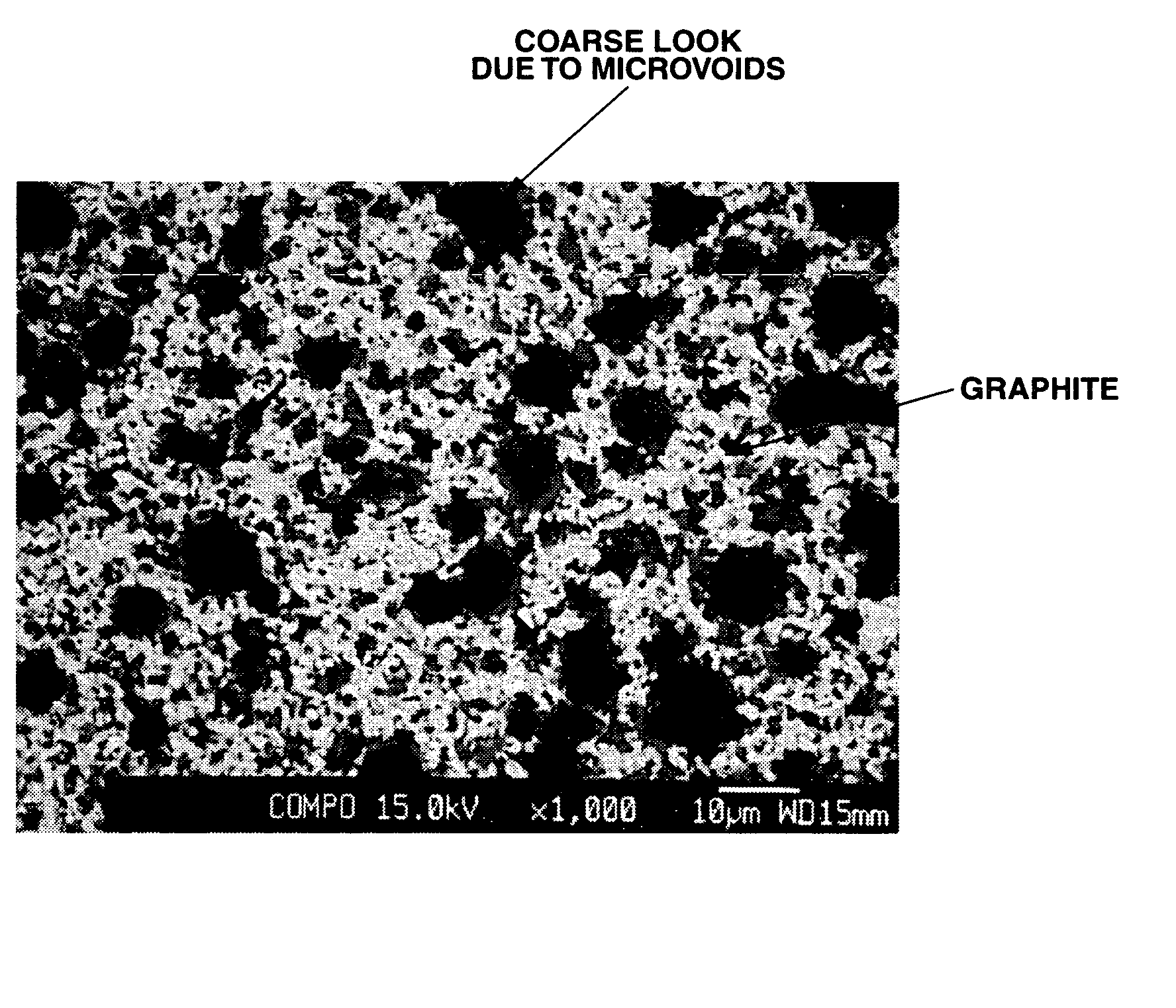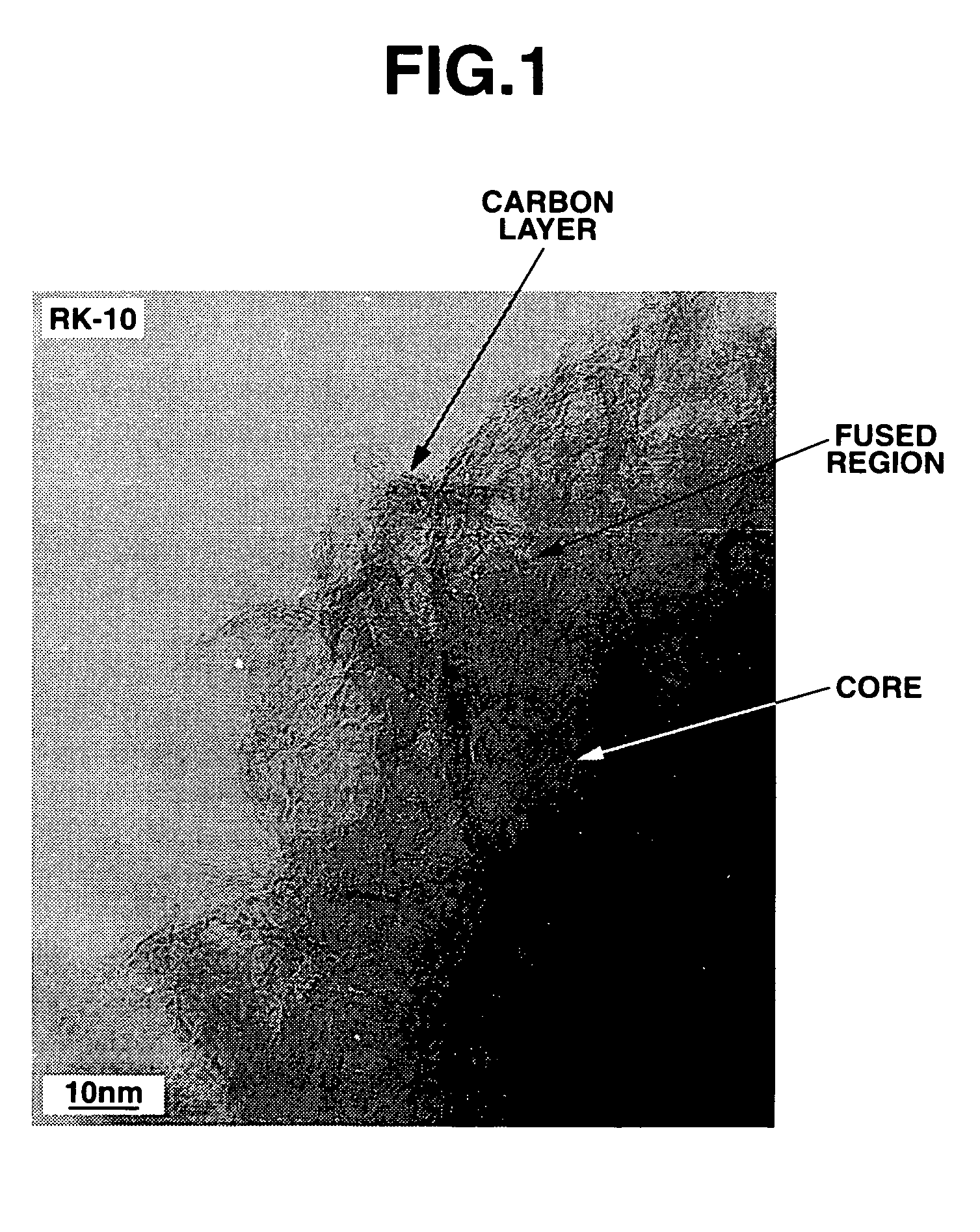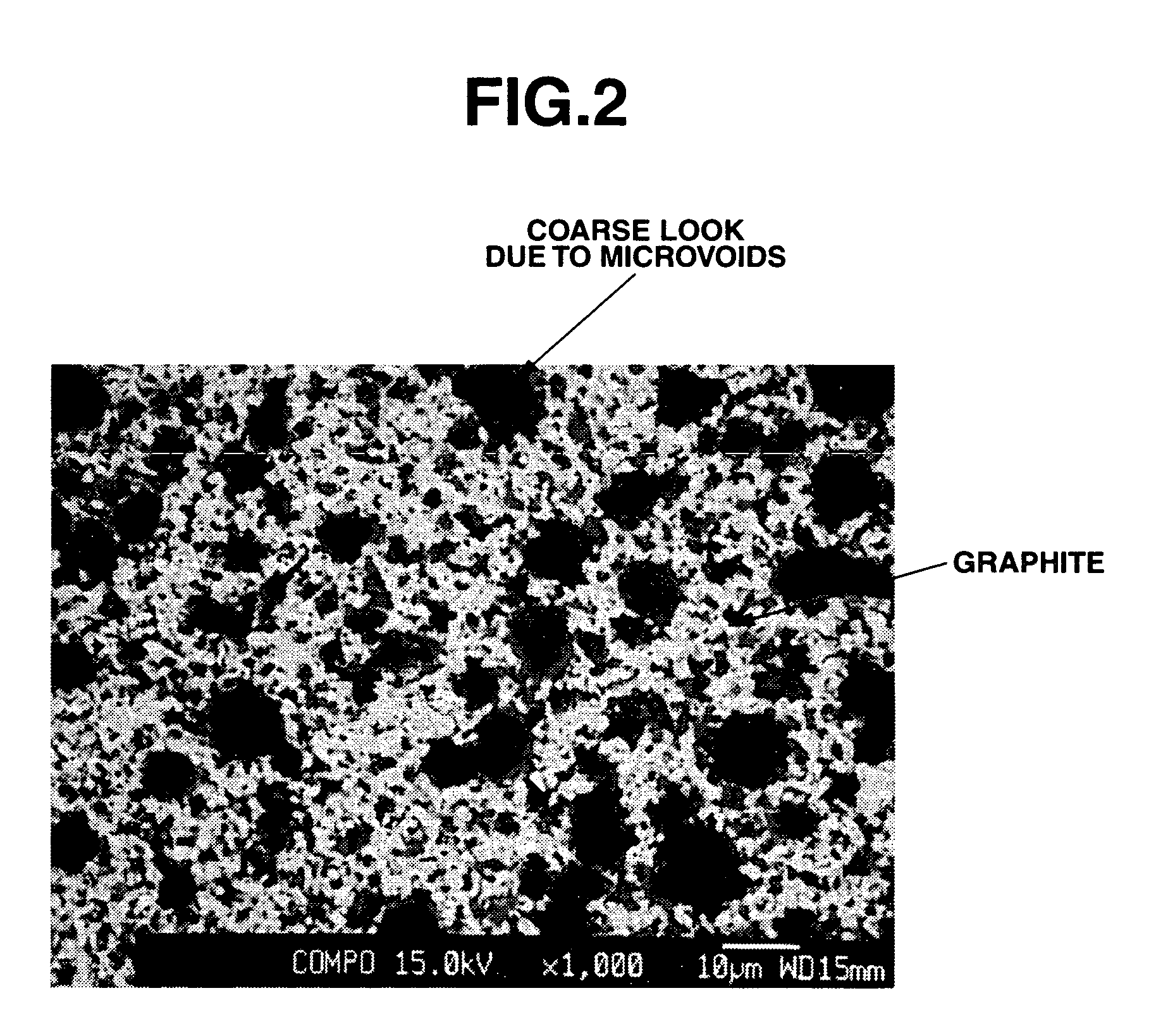Si-C-O composite, making method, and non-aqueous electrolyte secondary cell negative electrode material
a secondary cell, negative electrode technology, applied in secondary cells, conductive materials, chemical vapor deposition coatings, etc., can solve the problems of poor cycle performance, low initial efficiency, and unnecessarily high charge/discharge capacities of siliceous materials, and achieve better cycle performance
- Summary
- Abstract
- Description
- Claims
- Application Information
AI Technical Summary
Benefits of technology
Problems solved by technology
Method used
Image
Examples
example 1
[0084]To a curable siloxane mixture of 120 grams (g) of tetramethyltetravinylcyclotetrasiloxane (LS-8670, Shin-Etsu Chemical Co., Ltd.) and 80 g of methylhydrogensiloxane (KF-99, Shin-Etsu Chemical Co., Ltd.) was added 0.1 g of a chloroplatinic acid catalyst (1% chloroplatinic acid solution). The mixture was thoroughly mixed and precured at 60° C. for one day. The precured mixture in mass form was placed in a glass container and further in an atmosphere-controllable, temperature-programmable muffle furnace where it was heated in a nitrogen atmosphere at 200° C. for 2 hours until it was fully cured. The cured product was crushed and then milled in a ball mill using hexane as a dispersing medium to an average particle size of 10 μm. Then the powder was placed in an alumina container, which was closed with a lid, and fired in an atmosphere-controllable, temperature-programmable muffle furnace in a nitrogen atmosphere at 1,000° C. for 3 hours. After cooling, the fired product was commin...
example 2
[0089]To 60 g of spherical synthetic graphite having an average particle size of 6 μm (MCMB6-28 by Osaka Gas Chemical Co., Ltd.) was added 2 g of divinyltetramethyldisilazane. The mixture was placed in a polyethylene bag and heated treated at 100° C. for 3 hours. It was then heated in a drier at 100° C. for one hour for removing ammonia. To the resulting powder were added a curable siloxane mixture consisting of 84 g of tetramethyltetravinylcyclotetrasiloxane (LS-8670, Shin-Etsu Chemical Co., Ltd.), 56 g of methylhydrogensiloxane (KF-99, Shin-Etsu Chemical Co., Ltd.) and 0.2 g of a chloroplatinic acid catalyst (1% chloroplatinic acid solution). Further 50 ml of hexane was added. The mixture in patty form was thoroughly mixed and heated at 60° C. for removing the solvent and precuring. It was cured in air at 200° C. for one hour.
[0090]The cured mixture in mass form was crushed and then milled in a ball mill using hexane as a dispersing medium to an average particle size of 15 μm. Aft...
example 3
[0092]Using a vertical tubular furnace (inner diameter ˜50 mm), the Si—C—O composite powder obtained in Example 1 was subjected to thermal CVD in a methane-argon mixture stream at 1,200° C. for 3 hours. The black mass thus obtained was disintegrated in an automated mortar. The CVD-treated Si—C—O composite powder had a surface coating carbon content of 14% and an average particle size of 13 μm.
[0093]It was evaluated as the negative electrode active material for a lithium ion secondary cell as in Example 1. The results are shown in Table 1 together with the analytical data.
PUM
| Property | Measurement | Unit |
|---|---|---|
| temperature | aaaaa | aaaaa |
| particle size | aaaaa | aaaaa |
| temperature | aaaaa | aaaaa |
Abstract
Description
Claims
Application Information
 Login to View More
Login to View More - R&D
- Intellectual Property
- Life Sciences
- Materials
- Tech Scout
- Unparalleled Data Quality
- Higher Quality Content
- 60% Fewer Hallucinations
Browse by: Latest US Patents, China's latest patents, Technical Efficacy Thesaurus, Application Domain, Technology Topic, Popular Technical Reports.
© 2025 PatSnap. All rights reserved.Legal|Privacy policy|Modern Slavery Act Transparency Statement|Sitemap|About US| Contact US: help@patsnap.com



